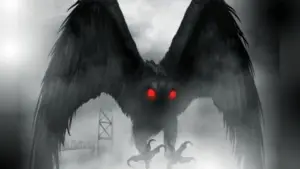In the shadowy corners of our collective imagination, stories of elusive creatures have thrived for centuries, passed down through whispers, campfire tales, and cultural lore. These enigmatic beings, often lurking on the fringes of human perception, have inspired both awe and debate, compelling us to question the boundaries of our known world. From the mist-shrouded lochs of Scotland, where legends of the Loch Ness Monster have captivated generations, to the dense and uncharted jungles of the Amazon, where rumors of yeti-like creatures stir the imagination, tales of mysterious entities—known collectively as cryptids—persist in nearly every culture.
What is it about these creatures that ignites such intense fascination? Is it their elusiveness, the tantalizing possibility that something extraordinary might be hiding just out of reach? Or is it the deeper, almost primal need to connect with the unknown, to believe that the natural world still holds secrets beyond our grasp? To understand cryptids, we must delve into the origins of their stories, explore the cultural contexts that shape them, and examine the enduring allure that keeps them alive in the modern consciousness.
The Definition of a Cryptid
The term “cryptid” finds its roots in the field of cryptozoology, a controversial branch of study that straddles the line between science and folklore. Cryptozoology, often dismissed as a pseudoscience by mainstream academics, is devoted to the investigation of creatures whose existence has yet to be confirmed by conventional scientific methods. The word “cryptid” itself is derived from the Greek “kryptos,” meaning “hidden” or “secret,” perfectly encapsulating the elusive nature of these beings.
Cryptids exist in a curious liminal space—caught between the realms of myth and empirical reality. They are not entirely dismissed as fantasy like dragons or unicorns, nor are they accepted as established species. Instead, they occupy a gray area fueled by anecdotal sightings, folklore, and speculative research. These creatures are the subjects of whispered campfire stories and grainy, tantalizing photographs, leaving just enough evidence to intrigue but never enough to conclusively prove their existence.
Unlike purely mythical beings, cryptids are typically grounded in the possibility of discovery. They are envisioned as part of the natural world, perhaps hiding in its most remote and inhospitable regions. Some of the most famous cryptids include the Loch Ness Monster, thought to inhabit the depths of a Scottish lake; Bigfoot, the elusive giant ape of North American forests; the Chupacabra, a vampiric creature reported in Latin America; and Mothman, a winged humanoid said to forewarn impending disasters. These creatures are more than just folklore; they are cultural icons, sparking endless debate and fascination across the globe.
The Roots of Cryptid Lore
Cryptids often emerge from a complex interplay of folklore, cultural storytelling, and misidentifications of known phenomena. Throughout history, human beings have sought to explain the unexplainable, crafting narratives that blend reality with imagination. For example, Indigenous oral traditions often recount tales of creatures that modern cryptozoologists now classify as cryptids. These stories, deeply rooted in the spiritual and cultural frameworks of their communities, serve as both cautionary tales and reflections of humanity’s relationship with nature.
Bigfoot, or Sasquatch, provides a compelling case study. The legend of a large, hairy, humanoid creature roaming the forests of North America predates modern media, tracing back to Native American traditions. Tribes such as the Salish, Miwok, and Hoopa have long told stories of “wild men” or “giant forest dwellers,” emphasizing their strength, intelligence, and elusiveness. These accounts often reflect a respect for the wilderness and a belief in creatures that exist just beyond the realm of human understanding.
In other instances, cryptid lore may originate from misinterpreted encounters with real animals. Nature, after all, has a way of creating creatures and events that defy immediate explanation. A colossal squid washing ashore might give rise to tales of sea monsters capable of sinking ships. Similarly, the sight of a bear standing upright could be mistaken for a humanoid figure, sparking rumors of a man-beast inhabiting the woods. Shadows, unusual lighting, or fleeting glimpses can all contribute to sightings that become embroidered into larger-than-life myths.
The process of storytelling and embellishment further amplifies these accounts, turning a momentary encounter into a generational legend. In this way, cryptids become a tapestry of human perception, fear, and wonder, reflecting both the mysteries of the natural world and the intricate narratives we weave to make sense of it.
Why Do We Believe in Cryptids?
The allure of cryptids lies in their ability to blur the line between science and mystery, sparking both our curiosity and our imagination. They remind us that, even in an age of satellite mapping and deep-sea exploration, the world still holds vast, unexplored corners. These creatures symbolize the enduring possibility that nature harbors secrets yet to be uncovered. Each reported sighting or anecdotal account whispers a tantalizing promise: that the extraordinary might be just out of reach.
Cryptids also serve as mirrors to humanity’s hopes and fears, reflecting our deepest desires to believe in the unknown. They tap into a primal yearning for wonder, providing an antidote to the predictability of a world increasingly mapped and understood. In the face of technological advances and scientific achievements, cryptids offer a sense of magic and mystery—a reminder that not everything can be explained or categorized.
Moreover, cryptids often transcend their role as mere curiosities to become symbols of cultural identity. The Loch Ness Monster, affectionately known as Nessie, exemplifies this phenomenon. Nessie is not merely a creature said to inhabit the dark waters of a Scottish lake; she is a cultural icon, representing national pride and heritage. Her legend draws millions of tourists to Loch Ness every year, fueling local economies and preserving a sense of collective wonder. Similarly, creatures like Bigfoot and the Chupacabra have become embedded in regional identities, sparking festivals, merchandise, and a thriving subculture of enthusiasts.
In a broader sense, cryptids remind us of the stories we tell ourselves about the world and our place within it. They challenge us to remain open to possibility, to question what we think we know, and to keep the spirit of exploration alive. Whether as symbols of untamed nature, relics of forgotten histories, or figments of collective imagination, cryptids occupy a unique and enduring place in the human psyche.
The Evidence Problem
Despite countless sightings, blurry photographs, and grainy videos, the existence of cryptids remains unproven. Mainstream science requires empirical evidence—bones, DNA, or a live specimen—to classify a new species. This absence of hard evidence is a primary reason why cryptozoology is often dismissed by the scientific community as speculative or unscientific.
However, history has shown that the line between myth and reality is not always clear-cut. Some creatures once considered mythical were later confirmed to exist, defying expectations and reshaping our understanding of the natural world. The coelacanth, for instance, was thought to have gone extinct 66 million years ago until it was rediscovered alive in 1938, swimming off the coast of South Africa.
Similarly, the okapi, a giraffe-like mammal, was dismissed as a local legend until its existence was confirmed by Western science in the early 20th century. These examples serve as a reminder that nature still has surprises in store—and that the realm of cryptids may hold more truth than we realize.
Could other “hidden” creatures be awaiting similar rediscovery? While skeptics demand definitive proof, believers hold on to the hope that somewhere in the vast expanses of wilderness, a breakthrough awaits.
Cryptids in Modern Culture
Today, cryptids are not merely the domain of folklore enthusiasts but a thriving pop culture phenomenon. They inspire countless movies, books, television shows, podcasts, and even conventions dedicated to exploring their mysteries. Shows like Finding Bigfoot and Expedition Unknown keep the hunt alive, blending scientific inquiry with the thrill of adventure. Meanwhile, online communities dissect every reported sighting or blurry photograph with fervor, fueling debates that blur the line between skepticism and belief.
Cryptids also raise profound questions about the nature of belief and the human need for wonder. In a world where technology provides instant answers, the persistence of cryptid lore suggests an enduring hunger for mystery. Perhaps the fascination with cryptids is less about proving their existence and more about preserving the spirit of discovery. They remind us that some questions remain unanswered, inviting us to look beyond the known and embrace the possibility of the extraordinary.
Beyond entertainment, cryptids play a role in fostering a sense of community and shared curiosity. Festivals like the Mothman Festival in West Virginia or Sasquatch-themed gatherings in the Pacific Northwest draw thousands of attendees, celebrating both the creatures and the cultural narratives they inspire. Merchandise, artwork, and fan theories further cement their place in modern culture, proving that the allure of the unknown is as strong as ever.
The Final Word
So, what is a cryptid? It’s more than just an unverified creature; it’s a symbol of the unknown, a reminder that not everything in our world can be neatly cataloged or explained. Whether you view cryptids as scientific curiosities, cultural artifacts, or outright hoaxes, one thing is certain: they fuel our imaginations and challenge our perceptions of reality. And in a world increasingly dominated by facts and figures, maybe that’s exactly what we need.



